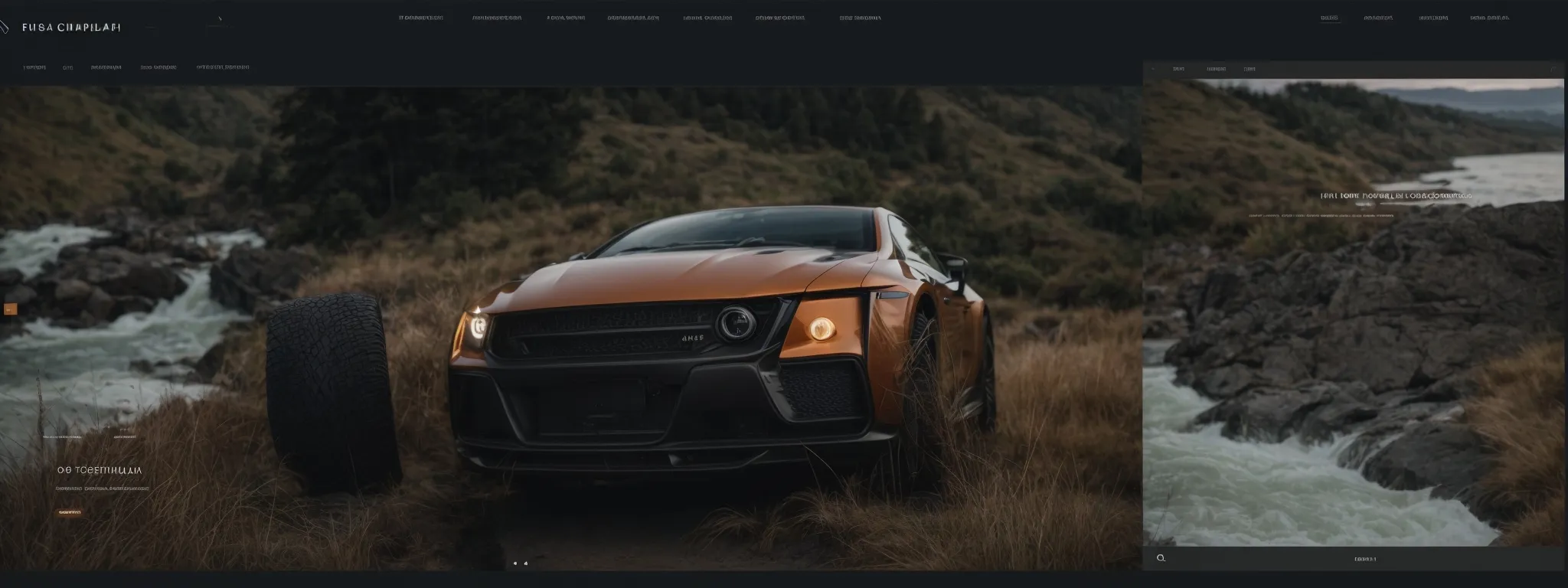How to Improve On-Page SEO
Maximizing Your Website’s Potential: Essential Steps for on-Page SEO Enhancement In the digital marketplace, the optimization of a website is not just beneficial; it’s essential for standing […]
Maximizing Your Website’s Potential: Essential Steps for on-Page SEO Enhancement
In the digital marketplace, the optimization of a website is not just beneficial; it’s essential for standing out amongst the cacophony of online competitors.
LinkGraph’s SEO services understand that refining on-page SEO elements acts as the cornerstone for elevating your search engine ranking, ensuring each web page not only attracts but also captivates the target audience.
By meticulously tailoring title tags, meta descriptions, and strategically placing keywords, businesses can craft an SEO strategy that resonates with both search engines and users alike.
Site speed enhancements and image optimizations further serve to polish the user experience, creating a seamless digital journey for each visitor.
Keep reading to unveil how these pivotal SEO practices can transform your website into a high-performing digital asset.
Key Takeaways
- LinkGraph’s on-Page SEO Services Are Crucial for Infusing Targeted Keywords Into Title Tags, Enhancing Search Engine Rankings, and User Engagement
- Optimization of Meta Descriptions With Relevant Keywords and CTAs by LinkGraph Significantly Impacts Click-Through Rates and Aligns Content With User Expectations
- Website Structure Improvement, Particularly Through Strategic Use of Header Tags and Page Speed Optimization, Is Key to LinkGraph’s on-Page SEO Services
- Image Optimization and the Use of Descriptive Alt Text for Accessibility Are Essential Components of LinkGraph’s Comprehensive SEO Strategy
- The Meticulous Research and Integration of Primary and LSI Keywords by LinkGraph Are Fundamental to Ensuring Content Relevancy and Enhancing Search Engine Visibility
1. Tailoring Your Title Tags for Maximum Impact

In the realm of Search Engine Optimization, the artistry of crafting title tags cannot be overstated.
As the vanguard of your digital presence in search engine rankings, these succinct yet potent phrases bear the weighty responsibility of making a first impression on searchers and algorithms alike.
Few elements on a web page wield as much influence over user engagement and search visibility.
LinkGraph’s on-page SEO services emphasize the crucial practice of weaving targeted keywords into title tags with precision, ensuring that they remain not only relevant but also irresistibly clickable to a discerning audience.
Distilling a page’s content into a concise, attention-grabbing title commands the finesse that sets a seasoned SEO strategist apart.
Insert Targeted Keywords Strategically
Optimal keyword placement within title tags is a precise endeavor where one’s understanding of user intent melds with industry expertise. LinkGraph’s SEO services meticulously incorporate target keywords that mirror what users type into search engines, aligning the company’s digital offerings with the queries of its prospects.
Strategic keyword integration elevates the relevance of your web page, making it more likely to emerge as a top contender in the SERPs. Consider the following methodical approach honed by LinkGraph when altering title tags:
- Analyze the most sought-after search terms relevant to the product or service.
- Optimize the title tag to accommodate the primary keyword phrase, ensuring natural readability for the user.
- Balance the inclusion of keywords without risking over-optimization, which could detract from the user experience.
Keep Titles Concise and Compelling
Mastery of title tag optimization translates into crafting messaging that is both succinct and enthralling. LinkGraph’s SEO services are finely attuned to creating title tags that capture the essence of a page’s content while stoking the curiosity of the audience, thus fostering a magnetic pull towards the website.
Effective brevity in title tags facilitates a clear, quick conveyance of value propositions, and LinkGraph’s on-page SEO services are adept at distilling this essence without forsaking the allure that beckons the click. It’s about striking the perfect harmony between conciseness and allure, conveying a compelling narrative in a tight character space to improve search rankings and draw in users.
2. Crafting Meta Descriptions That Boost Click-Through Rates

The meta description, a finely tuned narrative tucked beneath your page title in Google’s search results, serves as a decisive factor in capturing the interest of potential visitors.
As an extension of LinkGraph’s comprehensive on-page SEO services, the crafting of meta descriptions is executed with the dual intent of embedding relevant keywords and persuasive calls to action (CTAs).
These snippets, though not a direct ranking factor, profoundly impact click-through rates by offering searchers a clear, inviting summary of what the page contains.
Ensuring your meta descriptions are optimized for full display on search engine results pages (SERPs) is not a mere technicality but an intricate part of enhancing a website’s magnetism and user relevance.
Include Relevant Keywords and CTAs
In the current landscape where user experience governs the efficacy of SEO efforts, integrating relevant keywords and compelling calls to action within meta descriptions is a nuanced art. LinkGraph’s SEO Content Strategy is deftly designed to mesh indispensable keyword phrases with motivational CTAs, guiding the user succinctly from the search engine result pages to a company’s web page.
Understanding the searcher’s journey and the pivotal role of the meta description, the expert team at LinkGraph aligns page content with potential customer expectations:
- Employ strategic keyword research to discern the terms users are actively seeking.
- Weave these terms into the meta description, enhancing relevance and search engine ranking prospects.
- Incorporate clear CTAs that resonate with the audience, compelling them to engage with the content page.
At every step, LinkGraph’s meticulous approach to on-page SEO services ensures that every meta description serves as a direct conduit to higher click-through rates and improved user engagement.
Optimize Length to Display Fully on SERPs
The precise length of a meta description is a critical factor; it ensures the message is wholly visible in the SERPs and avoids being truncated, potentially losing vital information or a call to action. LinkGraph’s SEO services calibrate the meta description’s length to cap it within the optimal range, which varies as search engines like Google periodically adjust their specifications.
Capturing viewer attention within this limited space demands not just brevity but strategic expression; thus, LinkGraph crafts each meta description to convey maximum value within the constraints imposed by SERPs:
- Compose clear, concise summaries that encapsulate the essence of the content page.
- Ensure the full message is displayed in search results to maximize click-through potential.
- Regularly revise and adapt meta descriptions in response to changes in search engine algorithms.
3. Utilizing Header Tags to Structure Content Effectively

The architecture of a website extends beyond its visual appeal and navigational framework; it delves into the realm of content organization, a fundamental aspect of on-page SEO optimization.
Mastery in the use of header tags, particularly H1s for main titles and subordinate H2s and H3s for content breakdown, is pivotal to enhancing the clarity and hierarchy of information presented on a web page.
LinkGraph’s SEO services integrate this structural element as a cornerstone of an SEO content strategy, which in turn reinforces the thematic consistency required for elevating a site’s search engine ranking performance.
Use H1 Tags for Main Titles Only
In the strategic deployment of header tags for SEO efficacy, H1 headers emerge as a pivotal component, exclusively reserved for main titles and serving as the primary anchor for page content. LinkGraph’s on-page SEO services meticulously ensure that each H1 tag is unique across the website and succinctly encapsulates the core topic of a webpage, signaling the paramount importance to search engines and enhancing content discoverability.
By leveraging the singular use of H1 tags for main titles, LinkGraph solidifies the thematic foundation of each page, providing a clear entry point for both users and search engine crawlers. This focused application strengthens thematic relevance and supports the digital architecture of the site, which is essential for improving search engine positioning and user navigation.
Break Down Content With H2s and H3s
Adept placement of H2 and H3 headers plays a significant role in the nuanced choreography of content organization, serving as navigational beacons within the body of a webpage. LinkGraph’s SEO services champion the structured use of these tags to build a logical flow, partitioning sections for enhanced readability and facilitating search engines’ comprehension of a page’s hierarchical composition.
These secondary headers, when employed strategically, do more than introduce new sections; they boost the thematic strength of the content, enabling search engines to parse and index information with higher efficiency. LinkGraph’s on-page SEO services utilize H2 and H3 tags to reinforce keyword relevance, bolstering the SEO Ranking Potential of both category and product pages, ensuring clarity and topical depth for every reader’s journey.
4. Enhancing User Experience With Fast Page Load Speeds

In today’s high-speed digital environment, the user experience on a website has become synonymous with efficiency and fluidity, marked by rapid page load times.
As part of LinkGraph’s comprehensive on-page SEO services, enhancing page speed is a fundamental component, indispensable in clinching the competitive edge required to retain user attention and ascend the ladder of search engine rankings.
A website that loads quickly not only gratifies the ever-decreasing patience of users but also aligns favorably with search engine algorithms, which factor site speed into their ranking calculus.
This section will explore how to boost page performance by Optimizing Images and media files, implementing caching solutions, and streamlining code—all with the objective of delivering an exemplary user experience and improved SEO outcomes.
Optimize Images and Media Files
In the quest to amplify site responsiveness, optimizing images and media files stands as a non-negotiable imperative in LinkGraph’s lauded SEO services. Through the compression of visual elements and the embrace of modern file formats, the company ensures that visual richness does not impede the swift delivery of content, thereby aligning with the expectations of both search engines and users.
LinkGraph’s arsenal includes sophisticated tools like SearchAtlas SEO software, which aids in the meticulous curation of media files for optimal performance. This process not only enhances the user’s journey with faster loading times but also contributes to an improved SEO ranking by meeting the technical standards set by search engines for page speed efficiency.
Implement Caching and Minimize Code
LinkGraph’s SEO services methodically integrate caching technologies, accelerating content delivery by temporarily storing frequently requested data. Implementing caching minimizes server response time, a crucial touchpoint in the optimization of page speed, directly influencing the site’s search rank favorability and user satisfaction.
Alongside caching, LinkGraph’s technical expertise extends to streamlining code—paring down unnecessary characters, spaces, and comments to tighten the underlying architecture of web pages. This meticulous refinement effectively reduces file sizes, further expediting page load times and ultimately contributing to a seamless user experience and stronger search engine optimization results.
5. Optimizing Images for Faster Loading and Accessibility

With the shift towards a more inclusive and agile web, optimizing images for expedited loading without compromising quality marks a critical aspect of enhancing a website’s performance and accessibility.
This optimization not only impacts page speed, a fundamental SEO element, but also ensures that all users, regardless of device or physical ability, have equitable access to visual content.
Within the methodical framework of on-page SEO services, LinkGraph adopts a holistic approach to image optimization that encompasses advanced compression techniques and the thoughtful inclusion of descriptive alt text for screen readers, thereby amplifying the overall user experience while reinforcing the site’s search engine optimization posture.
Compress Images Without Losing Quality
In the meticulous pursuit of page speed optimization, LinkGraph’s on-page SEO services skillfully compress images to reduce file size while preserving visual integrity. Employing state-of-the-art compression algorithms, the company ensures that image quality remains intact, enabling swift loading times without deterring from the overall aesthetic of the website.
LinkGraph’s approach to image optimization is rooted in the delicate balance between performance and presentation, effectively enhancing the user experience without sacrificing the compelling nature of visual content. This strategic compression leads to faster page loading, which is essential for maintaining user engagement and bolstering a website’s search engine ranking.
Add Descriptive Alt Text for Screen Readers
In the quest to optimize websites for all users, LinkGraph’s on-page SEO services understand that alt text is an essential facet of image optimization. Providing descriptive alt tags for images ensures accessibility for users who rely on screen readers, bridging the gap between visual content and its textual representation.
LinkGraph’s commitment to comprehensive SEO strategy acknowledges the importance of alt text that paints a clear picture for visitors who are visually impaired. These concise descriptions contribute greatly to on-page SEO by allowing search engines to better understand and index the visual content of a page.
6. Boosting Relevancy With Strategic Keyword Placement

Positioning a website at the pinnacle of search engine performance pivots on an adept understanding of keyword significance.
The strategic placement of targeted search terms within a website’s content not only tailors the user experience to meet the audience’s needs but also serves as the cornerstone of on-page SEO enhancement.
LinkGraph’s SEO services delicately balance the act of researching and selecting primary keywords with the symphonic weaving of Latent Semantic Indexing (LSI) keywords, ensuring each word harmoniously supports the site’s relevancy and authority.
This introductory discussion sets the stage for delving into the meticulous processes that anchor a website firmly in the realm of relevance and visibility.
Research and Select Primary Keywords
Achieving a dominant online presence begins with the meticulous research and selection of primary keywords, which are the bedrock of a website’s search engine visibility. LinkGraph’s SEO services employ advanced tools to identify the most relevant and impactful keyword ideas, thus laying a foundation for content that resonates with both search engines and target audiences.
The selection process for these target keywords goes beyond mere popularity; it incorporates a deep understanding of search intent and the competitive landscape. LinkGraph ensures that the chosen keywords align with the user’s needs and the company’s unique selling propositions:
| SEO Task | LinkGraph’s Strategy | Expected Outcome |
|---|---|---|
| Keyword Research | Utilizing cutting-edge analytics to gauge search volume and relevancy. | Curated list of potent keywords tailored to audience intent. |
| Keyword Selection | Assessing competition and identifying niche-specific opportunities. | Enhanced content alignment with market demand and search patterns. |
Incorporate LSI Keywords Naturally in Content
Enriching content with Latent Semantic Indexing (LSI) keywords involves sprinkling variations and related terms throughout the text. LinkGraph advances this practice within its on-page SEO services, ensuring that LSI keywords complement the primary terms, thereby enhancing the overall thematic relevance without disrupting the natural flow of the content.
The skillful integration of LSI keywords bolsters the contextual framework of a web page, enabling search engines to discern topic depth and relatedness more effectively. By doing so, LinkGraph not only streamlines the path for search engines to recognize the pertinence of web content but also refines the experience for readers who seek comprehensive information on a given subject.
| Content Element | LinkGraph’s Incorporation of LSI Keywords | Improvement Metric |
|---|---|---|
| Web Page Text | Fusing LSI keywords with the primary keyword set to create detailed and robust content. | Increased topical authority and search relevance. |
| Content Readability | Striking a balance between keyword usage and maintaining natural, engaging prose. | Enhanced user engagement and dwell time. |
Conclusion
Maximizing your website’s potential hinges on executing essential on-page SEO enhancements with precision and strategic insight.
By crafting impactful title tags and meta descriptions, LinkGraph ensures your content makes a strong first impression and encourages clicks.
These elements, peppered with strategically placed, researched keywords, elevate your site’s visibility and relevance.
Utilizing header tags effectively structures content, making it accessible and easy to navigate.
Rapid page load speeds and optimized images contribute to an excellent user experience, which is critical for retaining visitors and satisfying search engine algorithms.
Additionally, the thoughtful incorporation of LSI keywords enriches content contextuality, boosting your site’s topical authority and relevance.
Together, these steps form a robust foundation that not only improves search rankings but also provides a seamless and engaging experience for users.















































































